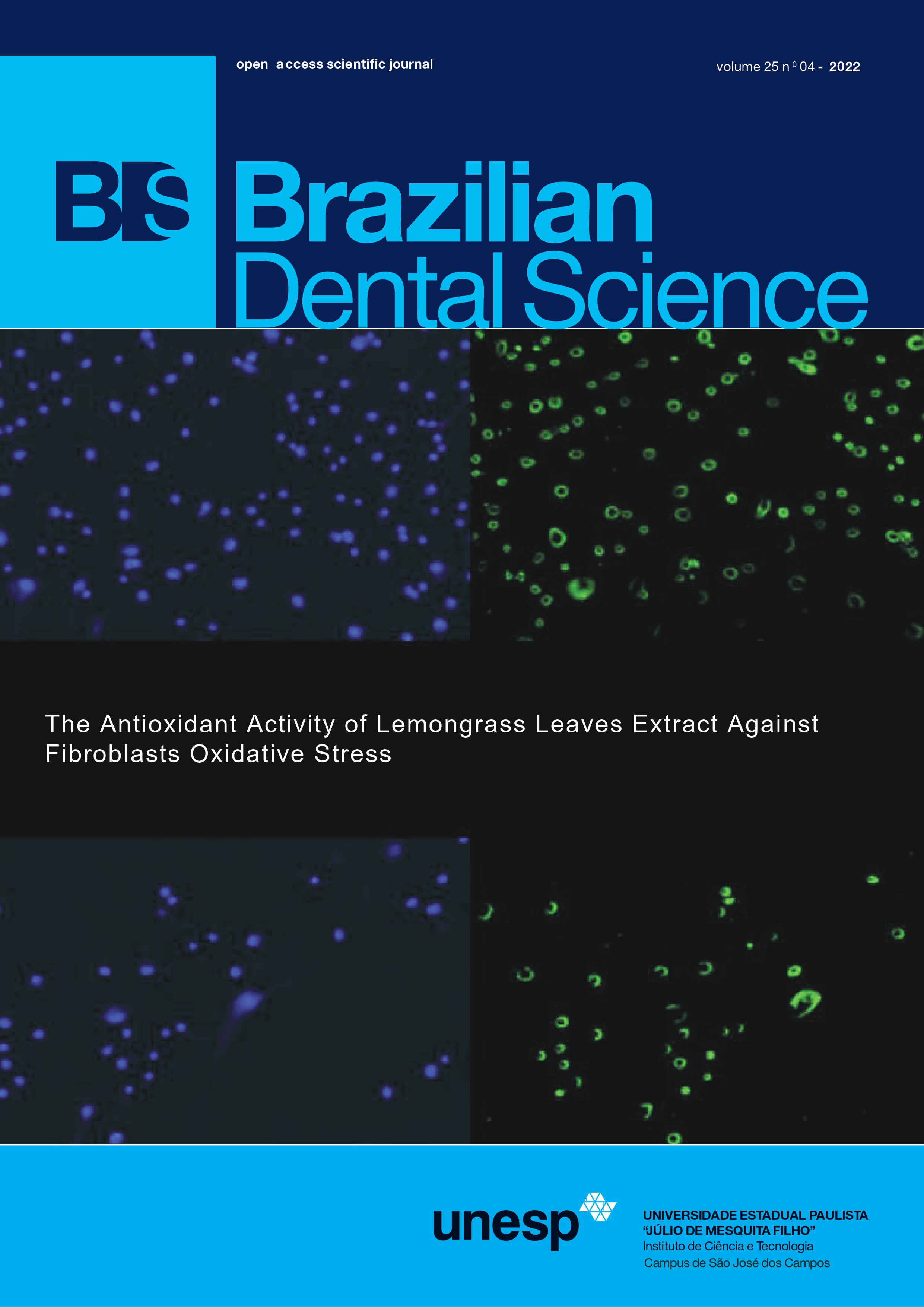Experimental nano calcium aluminate/tri calcium silicate root repair: Synthesis, physical and mechanical properties compared to mineral trioxide aggregate and Biodentine
DOI:
https://doi.org/10.4322/bds.2022.e3368Abstract
Objective: Endodontic perforation is a challenging mishap that should be repaired with a biocompatible material, Mineral trioxide aggregate (MTA) and Biodentine are the most commonly used repair materials. However, these materials are expensive, (MTA) has prolonged setting time and difficult manipulation. The purpose of this study is to prepare the experimental nano calcium-aluminate/tri-calcium-silicate (CA/C3 S) material and comparing its physical properties with biodentine and MTA, to evaluate the experimental material eligibility to compete the commercial repair materials. And to perform part two (animal study) that will evaluate the cytotoxicity, the biocompatibility and the efficacy of (CA/C3 S) in furcal perforation repair compared to diode laser. Material and Methods: A mixture of calcium carbonate and aluminum oxide was used to formulate calcium aluminate phase (CA), tri-calcium-Silicate phase (C3 S) was formulated by firing of calcium carbonate and quartz. The produced powders were investigated by X-ray diffraction, then (CA) and (C3 S) mixed with water.(CA/ C3 S) compared with MTA and biodentine for setting-time, micro-hardness, dimensional-stability and solubility. Results: Mean setting time of (CA/C3 S) was (32.70±0.75min) which is significantly higher than MTA and Biodentine. The Mean microhardness of (CA/C3 S) was (56.50±7.41VHN) which has no statical difference with MTA and Biodentine. Solubility results showed weight increase for (CA/C3 S) as following (6.29±3.05)and loss of weight for MTA and Biodentine. The percentage of change in dimensions for(CA/C3 S) increased as following (0.64±0.78) while decreased for MTA and Biodentine. Conclusion: The experimental (CA/C3 S) material showed good microhardness, dimensional stability and acceptable setting time that could be improved in further work.
KEYWORDS
Biodentine; MTA; Nano calcium aluminate; Tri-calcium-silicate, Root repair.
Downloads
Downloads
Published
Versions
- 2022-11-07 (2)
- 2022-09-30 (1)
How to Cite
Issue
Section
License
Brazilian Dental Science uses the Creative Commons (CC-BY 4.0) license, thus preserving the integrity of articles in an open access environment. The journal allows the author to retain publishing rights without restrictions.
=================




























